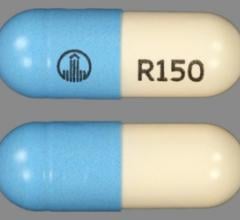
May 31, 2017 – The results from the first real-world, matched head-to-head study comparing all-cause healthcare costs and healthcare resource utilization (HCRU) among novel oral anticoagulants (NOACs) were presented at the International Society for Pharmacoeconomics and Outcomes Research 22nd Annual International Meeting in Boston. Boehringer Ingelheim Pharmaceuticals issued a press release regarding the study results.
This real-world healthcare economic comparison is not intended to suggest a clinical comparison between NOACs, but did analyze the costs associated with the various NOACs. The claims analysis found that dabigatran (Pradaxa) was associated with lower all-cause costs and HCRU compared to rivaroxaban (Xarelto). Compared to apixaban (Eliquis), dabigatran was associated with similar all-cause costs and hospitalizations, but higher all-cause outpatient and pharmacy HCRU.
The approved labeling for dabigatran does not include data comparing the product to other NOAC therapies, and there are no clinical trials providing a head-to-head comparison of NOAC therapies. Dabigatran is indicated to reduce the risk of stroke and systemic embolism in patients with non-valvular atrial fibrillation (NVAF).
“While many studies have examined real-world outcomes with NOACs relative to warfarin, this is one of the first studies to compare NOACs against each other in terms of their impact on costs and HCRU,” said Stacey Long, senior vice president and general manager, Truven Health Life Sciences, IBM Watson Health. “This study provides valuable insights that can help physicians better understand the costs to patients and our healthcare system associated with NOAC treatment decisions.”
The study analyzed data from 70,898 newly-diagnosed NVAF patients who were newly treated with dabigatran, rivaroxaban or apixaban. The analysis used claims data collected between April 1, 2010 and Dec. 31, 2015 from two Truven Health Analytics MarketScan databases, which included Medicare beneficiaries and enrollees in commercial insurance plans. Truven Health Analytics is now part of the IBM Watson Health business. The study propensity-score matched dabigatran patients 1:1 with 26,592 rivaroxaban and 8,857 apixaban patients.
The primary outcome for the study was all-cause healthcare costs per-patient per-month (PPPM), while the secondary outcome was all-cause HCRU PPPM. Compared with rivaroxaban, dabigatran was associated with significantly lower average PPPM total costs ($4,145 vs. $4,602; p<0.001) and inpatient costs ($1,471 vs. $1,856; p<0.01) in descriptive analyses; multivariate analyses found dabigatran was associated with significantly lower total costs ($4,093 vs. $4,636; p<0.001), inpatient costs ($1,476 vs. $1,862; p<0.001), outpatient costs ($2,016 vs. $2,121; p<0.01) and pharmacy costs ($634 vs. $645; p<0.05).
For the primary outcome of the study, when compared with apixaban, dabigatran was associated with similar average PPPM total costs ($3,862 vs. $3,998 and $3,866 vs. $3,951; in descriptive and multivariate analyses, respectively), inpatient costs ($1,222 vs. $1,390; $1,258 vs. $1,336), outpatient costs ($1,959 vs. $1,912; $1,943 vs. $1,924) and pharmacy costs ($682 vs. $697; $681 vs. $692).
For the secondary outcome, the authors found that dabigatran was associated with significantly lower all-cause HCRU compared to rivaroxaban, including fewer inpatient admissions (0.058 vs. 0.066; p=0.003), outpatient visits (4.845 vs. 4.962; p=0.019) and outpatient pharmacy claims (4.805 vs. 4.932; p=0.002). Compared to apixaban, dabigatran was associated with significantly higher outpatient visits (4.704 vs. 4.310; p<0.001) and outpatient pharmacy claims (4.855 vs. 4.614; p=0.005), but with similar inpatient admissions (0.053 vs. 0.048; p=0.150). For additional details on the study, please refer to the abstract (link is external).
“Hospitalizations and office visits related to NVAF cost the U.S. healthcare system over $6 billion each year,” said Sabine Luik, M.D., senior vice president, Medicine & Regulatory Affairs, Boehringer Ingelheim Pharmaceuticals, Inc. “At Boehringer Ingelheim, we are committed to studying our therapies in real-world settings, and believe this analysis provides important new information on the economic impact of treatment.”
Read the article "Advantages and Disadvantages of Novel Oral Anticoagulants."


 August 28, 2023
August 28, 2023 








